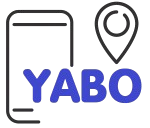CASE STUDY – GLAM BY JULIE – Clothing Brand

COMPANY PROFILE
Glam by Julie, a prominent clothing brand, originated from the entrepreneurial spirit of its founder, driven by a desire to bring affordable yet stylish clothing to fashion enthusiasts. The owner identified the gap in the market for chic and versatile apparel that strikes a balance between sophistication and everyday comfort, paving the way for the creation of Glam by Julie.
The customer focus of Glam by Julie is meticulously guided by a commitment to catering to individuals who appreciate contemporary fashion without compromising on comfort. The owners keen sense of style and trend awareness informs the brands offerings, ensuring a unique and sought-after collection. Choosing an online location was a strategic decision aligned with the modern shopping landscape.
This digital presence enables Glam by Julie to transcend geographical boundaries, reach a diverse audience, and offer a user-friendly platform for customers to explore and purchase the latest fashion trends.
Running the business successfully requires a dedicated team encompassing skilled designers, seamstresses, customer service professionals, and efficient supply chain management. Collaboration with manufacturers and suppliers contributes to maintaining high-quality standards and timely productions.
Glam by Julie employs a multi-faceted marketing approach, including social media promotions, influencer collaborations, and regular updates on the website showcasing new arrivals. Exclusive online sales events, personalized shopping recommendations, and customer loyalty programs enhance management.
The effectiveness of these strategies is assessed through sales analytics and customer feedback, ensuring that Glam by Julie remains at the forefront of the fashion industry.
Step-by-Step Guide to Running a Clothing Brand Business
Step 1: Vision and Brand Concept
Start by defining the vision for your brand, for example, Glam by Julie. In this, articulate the brand concept, envisioning a line of trendy and sophisticated clothing that empowers individuals to express their unique style. Create a vision board and gather images and inspirations that represent a unique value proposition.
Market Research and Target Audience
Conducting thorough market research, by identifying fashion trends and pinpointing your target audience. Understanding their preferences and lifestyles helps tailor the design to meet their needs, creating a strong connection between the brand and customers. Utilize Google Trends to explore the popularity of fashion trends over time. Identify rising or consistent trends that align with Glam by Julies vision. Analyze Instagram, Pinterest, and TikTok for popular fashion hashtags, influencers, and styles.
Step 3: Brand Identity and Logo Creation
Invest in creating a memorable brand identity. This includes designing a distinctive logo that encapsulates the essence of your brand.
Consistency in branding elements across all platforms enhances brand recognition with your clients and potential clients. Use Canva or Adobe Spark to create a unique brand logo and visual identity. Utilize Facebook Ads Manager for targeted advertising based on demographics, interests, and online behavior identified during market research.
Step 4: Product Development
Collaborating with designers and manufacturers to curate a collection that aligns with the brands identity. Quality fabric, attention to detail, and staying ahead of fashion trends are crucial elements in the creation of each garment. Explore wholesale fashion marketplaces such as Eastleigh or Kampala fashion market to connect with clothing suppliers. Negotiate terms, discuss bulk pricing, and assess the reliability of potential suppliers.
Step 5: E-Commerce Website Development
Establish a user-friendly e-commerce website for your business. It is crucial to prioritize a seamless shopping experience, including high-quality product images, detailed descriptions, and a secure checkout process. Mobile optimization is also a key consideration. Use a website builder like WordPress or Jimdo to launch. Test its functionality and user experience before the official launch.
Step 6: Social Media Presence
Leveraging social media platforms, by creating a strong online presence. Engaging content including behind-the-scenes glimpses, style tips, and customer features, fosters a community around the brand. Regular updates keep the audience excited about new arrivals. Create and optimize social media profiles on Instagram, Facebook, and Pinterest. Use Hootsuite or Buffer to schedule posts and maintain an active online presence.
Step 7: Growth and Expansion
As the brand gains traction, explore opportunities for growth such as introducing new collections, expanding product lines, and potentially collaborating with influencers or other brands. Integrate secure payment gateway such as PayPal, Stripe, or Square for online transactions. Ensure a seamless and secure checkout process.
Estimated startup Costs
Brand Identity and Logo Creation:
Cost for designing a distinctive logo and establishing brand identity: Kshs. 5,000 to Kshs. 10,000.
Product Development:
The cost of collaborating with designers and manufacturers to curate a collection: varies depending on the quantity and quality of garments, estimated at Kshs. 20,000 to Kshs. 40,000.
E-Commerce Website Development:
Cost for developing a user-friendly e-commerce website: Kshs. 10,000 to Kshs. 20,000.
Social Media Presence:
Cost for creating and optimizing social media profiles, as well as generating engaging content: Kshs. 5,000 to Kshs. 15,000.
Miscellaneous Expenses:
Additional expenses for marketing materials, packaging, initial inventory, and other operational costs: Kshs. 10,000 to Kshs. 25,000.
Totaling these estimates, the startup costs for Glam by Julie, an online clothing brand in Kenya, could range from approximately Kshs. 50,000 to Kshs. 110,000. These are rough estimates and actual costs may vary based on individual business plans, location, and other factors.

